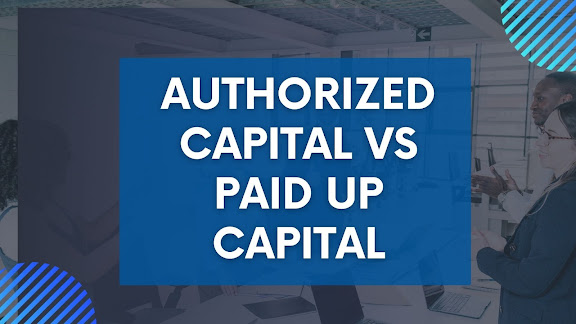Authorized Capital VS Paid up Capital
Introduction
In the realm of corporate finance, understanding the concepts of authorized capital and paid-up capital is essential. Both terms pertain to the capital structure of a company and play significant roles in determining its financial standing and operational capabilities. This article provides a comprehensive summary of authorized capital and paid-up capital, highlighting their definitions, differences, and implications.
Authorized Capital
Authorized capital refers to the maximum amount of capital that a company is legally allowed to raise from its shareholders through the issuance of shares. It is defined in the company's memorandum of association and represents the upper limit of the company's potential equity base. The authorized capital is usually specified during the company's incorporation and can be increased or decreased through certain legal procedures.
Paid-up Capital
Paid-up capital, on the other hand, refers to the actual amount of capital that shareholders have contributed to the company by purchasing its shares. It represents the portion of authorized capital that has been fully paid by the shareholders. Paid-up capital indicates the initial investment made by the shareholders and remains with the company for its operations and expansion.
Differences between Authorized Capital and Paid-up
Capital
While both authorized capital and paid-up capital are related to a company's capital structure, there are key differences between them:
a. Definition: Authorized capital represents the maximum amount of capital a company can raise, while paid-up capital refers to the actual amount of capital contributed by shareholders.
b. Legal Requirement: Authorized capital is a legal requirement for the incorporation of a company, whereas paid-up capital reflects the actual funds available to the company for its operations.
c. Flexibility: Authorized capital can be increased or decreased by following specific legal procedures, whereas paid-up capital can only be increased through the issuance of additional shares or infusion of more funds by shareholders.
d. Utilization: Authorized capital sets the upper limit of funds that a company can raise, whereas paid-up capital indicates the funds already received and available for utilization.
Implications of Authorized Capital and Paid-up Capital
The concepts of authorized capital and paid-up capital have several implications for a company:
a. financial Standing: A higher authorized capital demonstrates the company's potential to raise significant funds, which can enhance its credibility and attract investors. Conversely, a low authorized capital might limit the company's growth prospects.
b. Investor Confidence: Paid-up capital signifies the commitment of shareholders to the company and their confidence in its prospects. A higher paid-up capital indicates a strong investor base and can instill confidence in potential investors.
c. Regulatory Compliance: Companies are required to maintain their authorized and paid-up capital in adherence to legal and regulatory requirements. Failure to comply with these regulations can lead to penalties and legal repercussions.
d. Borrowing Capacity: Banks and financial institutions often consider a company's authorized and paid-up capital when assessing its borrowing capacity. Higher capital bases can enhance the company's ability to secure loans and finance its operations.
Conclusion
In summary, authorized capital and paid-up capital are
crucial components of a company's capital structure. Authorized capital
represents the maximum funds that a company can raise, while paid-up capital
reflects the actual capital contributed by shareholders. Understanding the
differences and implications of these terms is vital for assessing a company's
financial standing, investor confidence, and regulatory compliance. By
comprehending these concepts, stakeholders can make informed decisions
regarding investment, financing, and overall business strategies.
Trade Approvals provide the fastest company registration services with the highest approval rate and at an affordable cost.

.png)


Comments
Post a Comment